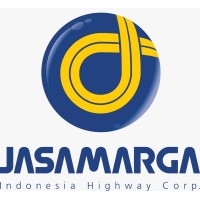
PT Jasa Marga (Persero) Tbk Company Cyber Security Posture
jasamarga.comTo support the economic growth, on March 1, 1978, the Government issued Regulation number 4 year 1978 on the establishment of PT Jasa Marga (persero) Tbk. Indonesia to provide a reliable road network in the country. Jasa Marga's 1978-constructed Jakarta-Bogor-Ciawi Toll Road is a milestone in the history of the toll road industry in Indonesia. At an earlier stage of its establishment, besides functioning as an operator, the Company also had an authority on toll roads in the country. Until 1987, Jasa Marga has been the only toll road operator in Indonesia funded by the Government through foreign loans and bond issuance. At the end of the 80s, the Government of Indonesia began to include private sectors to participate in developing the toll road through the Build, Operate and Transfer (BOT) mechanism. During the 90s, the Company facilitated private investors instead, which mostly failed to realize their project. JORR and Cipularang were ones of the toll roads taken over by the Company. The government issued Law number 38 year 2004 on Road which replaced Law number 13 year 1980, along with the issuance of Government Regulation number 15, which gives more specific regulations on toll roads. This have brought changes in the toll road business mechanisms including the establishment of the Toll Road Regulatory Agency, as well as the two-year adjusted toll tarif rates by the Minister of Public Works. Therefore, the full authorization is given back from the Company to the Government. Consequently, Jasa Marga which functions both as a toll road operator and developer requires a concession license from the Government.
PJM(T Company Details
jasamarga
932 employees
22743
484
Truck Transportation
jasamarga.com
Scan still pending
PT _1587524
In-progress
Between 900 and 1000
This score is AI-generated and less favored by cyber insurers, who prefer the TPRM score.
 PJM(T Global Score
PJM(T Global Score.png)

PT Jasa Marga (Persero) Tbk Company Scoring based on AI Models
| Model Name | Date | Description | Current Score Difference | Score |
|---|---|---|---|---|
| AVERAGE-Industry | 03-12-2025 | This score represents the average cybersecurity rating of companies already scanned within the same industry. It provides a benchmark to compare an individual company's security posture against its industry peers. | N/A | Between 900 and 1000 |
PT Jasa Marga (Persero) Tbk Company Cyber Security News & History
| Entity | Type | Severity | Impact | Seen | Url ID | Details | View |
|---|---|---|---|---|---|---|---|
| PT Jasa Marga (Persero) Tbk | Breach | 100 | 6 | 08/2022 | PTJ1824111122 | Link | |
Rankiteo Explanation : Attack threatening the economy of a geographical regionDescription: DESORDEN breached the network of Pt Jasamarga Tollroad operator, Indonesia’s largest major tollway and highway operator. The breach involved 252 GB of data, coding and documents including their users, customers, employees, corporate and financial data across 5 of their servers. PT JMTO immediately disabled the servers affected by the attack and started the process of recovering the data and moving the system to a more secure server. | |||||||
PT Jasa Marga (Persero) Tbk Company Subsidiaries

To support the economic growth, on March 1, 1978, the Government issued Regulation number 4 year 1978 on the establishment of PT Jasa Marga (persero) Tbk. Indonesia to provide a reliable road network in the country. Jasa Marga's 1978-constructed Jakarta-Bogor-Ciawi Toll Road is a milestone in the history of the toll road industry in Indonesia. At an earlier stage of its establishment, besides functioning as an operator, the Company also had an authority on toll roads in the country. Until 1987, Jasa Marga has been the only toll road operator in Indonesia funded by the Government through foreign loans and bond issuance. At the end of the 80s, the Government of Indonesia began to include private sectors to participate in developing the toll road through the Build, Operate and Transfer (BOT) mechanism. During the 90s, the Company facilitated private investors instead, which mostly failed to realize their project. JORR and Cipularang were ones of the toll roads taken over by the Company. The government issued Law number 38 year 2004 on Road which replaced Law number 13 year 1980, along with the issuance of Government Regulation number 15, which gives more specific regulations on toll roads. This have brought changes in the toll road business mechanisms including the establishment of the Toll Road Regulatory Agency, as well as the two-year adjusted toll tarif rates by the Minister of Public Works. Therefore, the full authorization is given back from the Company to the Government. Consequently, Jasa Marga which functions both as a toll road operator and developer requires a concession license from the Government.
Access Data Using Our API

Get company history
.png)
PJM(T Cyber Security News
MPTC, Singapore’s GIC finalize $1-B deal for Indonesian toll stake
MPTC subsidiaries and Singapore's GIC Pte. Ltd., a global institutional investor, have finalized their investment cooperation valued at $1 billion.

PJM(T Similar Companies

Veolia Transport
* Incorporate all transportation options seamlessly into the region * Offer a coordinated, smooth, interlocking transportation system * Provide each rider with high-quality service * Make our employees central to our business plan * Make tangible, measurable improvements to the e
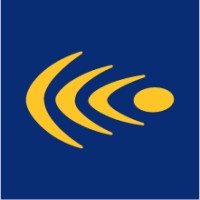
Netlog Logistics Group
– Based in Istanbul, Turkey, Netlog Logistics Group (“NLG”) is an internationally acclaimed logistics services provider (“LSP”) – NLG offers warehousing, international road, air and sea freight transportation, as well as temperature-controlled logistics and liquid bulk food transportatio
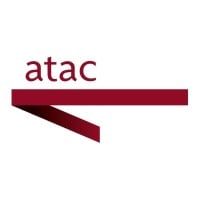
ATAC SpA
With over 100 years of history, Atac is Rome's municipal utility for public transport services and Italy's leading urban mobility operator, as well as being one of the largest Local Public Transport companies in Europe. From the historical centre to the outskirts, Atac’s network covers a territor
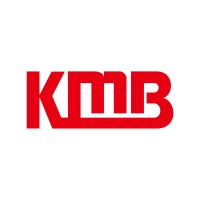
The Kowloon Motor Bus Company (1933) Limited
Established in 1933, The Kowloon Motor Bus Company (1933) Limited ("KMB") is the largest franchised bus operator in Hong Kong, serving more than 2.8 million passenger-trips each day. A workforce of more than 12,300 employees, including some 10,000 bus captains, ensures that customers enjoy high-qual
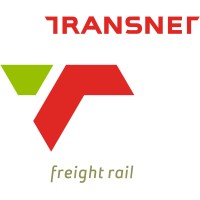
Transnet Freight Rail
Transnet Freight Rail is the largest division of Transnet SOC Ltd. It is a world class heavy haul freight rail company that specialises in the transportation of freight. The company maintains an extensive rail network across South Africa that connects with other rail networks in the sub-Saharan reg
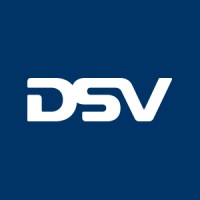
DSV - Global Transport and Logistics
At DSV, we keep supply chains flowing in a world of change. We provide and manage supply chain solutions for thousands of companies every day – from small family-run businesses to large global corporations. Our reach is global, yet our presence is local and close to our customers. Approx. 75,000 e

Frequently Asked Questions (FAQ) on Cybersecurity Incidents
PJM(T CyberSecurity History Information
Total Incidents: According to Rankiteo, PJM(T has faced 1 incidents in the past.
Incident Types: The types of cybersecurity incidents that have occurred include ['Breach'].
Total Financial Loss: The total financial loss from these incidents is estimated to be {total_financial_loss}.
Cybersecurity Posture: The company's overall cybersecurity posture is described as To support the economic growth, on March 1, 1978, the Government issued Regulation number 4 year 1978 on the establishment of PT Jasa Marga (persero) Tbk. Indonesia to provide a reliable road network in the country. Jasa Marga's 1978-constructed Jakarta-Bogor-Ciawi Toll Road is a milestone in the history of the toll road industry in Indonesia. At an earlier stage of its establishment, besides functioning as an operator, the Company also had an authority on toll roads in the country. Until 1987, Jasa Marga has been the only toll road operator in Indonesia funded by the Government through foreign loans and bond issuance. At the end of the 80s, the Government of Indonesia began to include private sectors to participate in developing the toll road through the Build, Operate and Transfer (BOT) mechanism. During the 90s, the Company facilitated private investors instead, which mostly failed to realize their project. JORR and Cipularang were ones of the toll roads taken over by the Company. The government issued Law number 38 year 2004 on Road which replaced Law number 13 year 1980, along with the issuance of Government Regulation number 15, which gives more specific regulations on toll roads. This have brought changes in the toll road business mechanisms including the establishment of the Toll Road Regulatory Agency, as well as the two-year adjusted toll tarif rates by the Minister of Public Works. Therefore, the full authorization is given back from the Company to the Government. Consequently, Jasa Marga which functions both as a toll road operator and developer requires a concession license from the Government..
Detection and Response: The company detects and responds to cybersecurity incidents through {description_of_detection_and_response_process}.
Incident Details
Incident 1: Ransomware Attack
Title: {Incident_Title}
Description: {Brief_description_of_the_incident}
Date Detected: {Detection_Date}
Date Publicly Disclosed: {Disclosure_Date}
Date Resolved: {Resolution_Date}
Type: {Type_of_Attack}
Attack Vector: {Attack_Vector}
Vulnerability Exploited: {Vulnerability}
Threat Actor: {Threat_Actor}
Motivation: {Motivation}
Incident 2: Data Breach
Title: {Incident_Title}
Description: {Brief_description_of_the_incident}
Date Detected: {Detection_Date}
Date Publicly Disclosed: {Disclosure_Date}
Date Resolved: {Resolution_Date}
Type: {Type_of_Attack}
Attack Vector: {Attack_Vector}
Vulnerability Exploited: {Vulnerability}
Threat Actor: {Threat_Actor}
Motivation: {Motivation}
Common Attack Types: As of now, the company has not encountered any reported incidents involving common cyberattacks.
Identification of Attack Vectors: The company identifies the attack vectors used in incidents through {description_of_identification_process}.
Impact of the Incidents
Incident 1: Ransomware Attack
Financial Loss: {Financial_Loss}
Data Compromised: {Data_Compromised}
Systems Affected: {Systems_Affected}
Downtime: {Downtime}
Operational Impact: {Operational_Impact}
Conversion Rate Impact: {Conversion_Rate_Impact}
Revenue Loss: {Revenue_Loss}
Customer Complaints: {Customer_Complaints}
Brand Reputation Impact: {Brand_Reputation_Impact}
Legal Liabilities: {Legal_Liabilities}
Identity Theft Risk: {Identity_Theft_Risk}
Payment Information Risk: {Payment_Information_Risk}
Incident 2: Data Breach
Financial Loss: {Financial_Loss}
Data Compromised: {Data_Compromised}
Systems Affected: {Systems_Affected}
Downtime: {Downtime}
Operational Impact: {Operational_Impact}
Conversion Rate Impact: {Conversion_Rate_Impact}
Revenue Loss: {Revenue_Loss}
Customer Complaints: {Customer_Complaints}
Brand Reputation Impact: {Brand_Reputation_Impact}
Legal Liabilities: {Legal_Liabilities}
Identity Theft Risk: {Identity_Theft_Risk}
Payment Information Risk: {Payment_Information_Risk}
Average Financial Loss: The average financial loss per incident is {average_financial_loss}.
Commonly Compromised Data Types: The types of data most commonly compromised in incidents are {list_of_commonly_compromised_data_types}.
Incident 1: Ransomware Attack
Entity Name: {Entity_Name}
Entity Type: {Entity_Type}
Industry: {Industry}
Location: {Location}
Size: {Size}
Customers Affected: {Customers_Affected}
Incident 2: Data Breach
Entity Name: {Entity_Name}
Entity Type: {Entity_Type}
Industry: {Industry}
Location: {Location}
Size: {Size}
Customers Affected: {Customers_Affected}
Response to the Incidents
Incident 1: Ransomware Attack
Incident Response Plan Activated: {Yes/No}
Third Party Assistance: {Yes/No}
Law Enforcement Notified: {Yes/No}
Containment Measures: {Containment_Measures}
Remediation Measures: {Remediation_Measures}
Recovery Measures: {Recovery_Measures}
Communication Strategy: {Communication_Strategy}
Adaptive Behavioral WAF: {Adaptive_Behavioral_WAF}
On-Demand Scrubbing Services: {On_Demand_Scrubbing_Services}
Network Segmentation: {Network_Segmentation}
Enhanced Monitoring: {Enhanced_Monitoring}
Incident 2: Data Breach
Incident Response Plan Activated: {Yes/No}
Third Party Assistance: {Yes/No}
Law Enforcement Notified: {Yes/No}
Containment Measures: {Containment_Measures}
Remediation Measures: {Remediation_Measures}
Recovery Measures: {Recovery_Measures}
Communication Strategy: {Communication_Strategy}
Adaptive Behavioral WAF: {Adaptive_Behavioral_WAF}
On-Demand Scrubbing Services: {On_Demand_Scrubbing_Services}
Network Segmentation: {Network_Segmentation}
Enhanced Monitoring: {Enhanced_Monitoring}
Incident Response Plan: The company's incident response plan is described as {description_of_incident_response_plan}.
Third-Party Assistance: The company involves third-party assistance in incident response through {description_of_third_party_involvement}.
Data Breach Information
Incident 2: Data Breach
Type of Data Compromised: {Type_of_Data}
Number of Records Exposed: {Number_of_Records}
Sensitivity of Data: {Sensitivity_of_Data}
Data Exfiltration: {Yes/No}
Data Encryption: {Yes/No}
File Types Exposed: {File_Types}
Personally Identifiable Information: {Yes/No}
Prevention of Data Exfiltration: The company takes the following measures to prevent data exfiltration: {description_of_prevention_measures}.
Handling of PII Incidents: The company handles incidents involving personally identifiable information (PII) through {description_of_handling_process}.
Ransomware Information
Incident 1: Ransomware Attack
Ransom Demanded: {Ransom_Amount}
Ransom Paid: {Ransom_Paid}
Ransomware Strain: {Ransomware_Strain}
Data Encryption: {Yes/No}
Data Exfiltration: {Yes/No}
Ransom Payment Policy: The company's policy on paying ransoms in ransomware incidents is described as {description_of_ransom_payment_policy}.
Data Recovery from Ransomware: The company recovers data encrypted by ransomware through {description_of_data_recovery_process}.
Regulatory Compliance
Incident 1: Ransomware Attack
Regulations Violated: {Regulations_Violated}
Fines Imposed: {Fines_Imposed}
Legal Actions: {Legal_Actions}
Regulatory Notifications: {Regulatory_Notifications}
Incident 2: Data Breach
Regulations Violated: {Regulations_Violated}
Fines Imposed: {Fines_Imposed}
Legal Actions: {Legal_Actions}
Regulatory Notifications: {Regulatory_Notifications}
Regulatory Frameworks: The company complies with the following regulatory frameworks regarding cybersecurity: {list_of_regulatory_frameworks}.
Ensuring Regulatory Compliance: The company ensures compliance with regulatory requirements through {description_of_compliance_measures}.
Lessons Learned and Recommendations
Incident 1: Ransomware Attack
Lessons Learned: {Lessons_Learned}
Incident 2: Data Breach
Lessons Learned: {Lessons_Learned}
Incident 1: Ransomware Attack
Recommendations: {Recommendations}
Incident 2: Data Breach
Recommendations: {Recommendations}
Key Lessons Learned: The key lessons learned from past incidents are {list_of_key_lessons_learned}.
Implemented Recommendations: The company has implemented the following recommendations to improve cybersecurity: {list_of_implemented_recommendations}.
References
Additional Resources: Stakeholders can find additional resources on cybersecurity best practices at {list_of_additional_resources}.
Investigation Status
Incident 1: Ransomware Attack
Investigation Status: {Investigation_Status}
Incident 2: Data Breach
Investigation Status: {Investigation_Status}
Communication of Investigation Status: The company communicates the status of incident investigations to stakeholders through {description_of_communication_process}.
Stakeholder and Customer Advisories
Incident 1: Ransomware Attack
Stakeholder Advisories: {Stakeholder_Advisories}
Customer Advisories: {Customer_Advisories}
Incident 2: Data Breach
Stakeholder Advisories: {Stakeholder_Advisories}
Customer Advisories: {Customer_Advisories}
Advisories Provided: The company provides the following advisories to stakeholders and customers following an incident: {description_of_advisories_provided}.
Initial Access Broker
Incident 1: Ransomware Attack
Entry Point: {Entry_Point}
Reconnaissance Period: {Reconnaissance_Period}
Backdoors Established: {Backdoors_Established}
High Value Targets: {High_Value_Targets}
Data Sold on Dark Web: {Yes/No}
Incident 2: Data Breach
Entry Point: {Entry_Point}
Reconnaissance Period: {Reconnaissance_Period}
Backdoors Established: {Backdoors_Established}
High Value Targets: {High_Value_Targets}
Data Sold on Dark Web: {Yes/No}
Monitoring and Mitigation of Initial Access Brokers: The company monitors and mitigates the activities of initial access brokers through {description_of_monitoring_and_mitigation_measures}.
Post-Incident Analysis
Incident 1: Ransomware Attack
Root Causes: {Root_Causes}
Corrective Actions: {Corrective_Actions}
Incident 2: Data Breach
Root Causes: {Root_Causes}
Corrective Actions: {Corrective_Actions}
Post-Incident Analysis Process: The company's process for conducting post-incident analysis is described as {description_of_post_incident_analysis_process}.
Corrective Actions Taken: The company has taken the following corrective actions based on post-incident analysis: {list_of_corrective_actions_taken}.
Additional Questions
General Information
Ransom Payment History: The company has {paid/not_paid} ransoms in the past.
Last Ransom Demanded: The amount of the last ransom demanded was {last_ransom_amount}.
Last Attacking Group: The attacking group in the last incident was {last_attacking_group}.
Incident Details
Most Recent Incident Detected: The most recent incident detected was on {most_recent_incident_detected_date}.
Most Recent Incident Publicly Disclosed: The most recent incident publicly disclosed was on {most_recent_incident_publicly_disclosed_date}.
Most Recent Incident Resolved: The most recent incident resolved was on {most_recent_incident_resolved_date}.
Impact of the Incidents
Highest Financial Loss: The highest financial loss from an incident was {highest_financial_loss}.
Most Significant Data Compromised: The most significant data compromised in an incident was {most_significant_data_compromised}.
Most Significant System Affected: The most significant system affected in an incident was {most_significant_system_affected}.
Response to the Incidents
Third-Party Assistance in Most Recent Incident: The third-party assistance involved in the most recent incident was {third_party_assistance_in_most_recent_incident}.
Containment Measures in Most Recent Incident: The containment measures taken in the most recent incident were {containment_measures_in_most_recent_incident}.
Data Breach Information
Most Sensitive Data Compromised: The most sensitive data compromised in a breach was {most_sensitive_data_compromised}.
Number of Records Exposed: The number of records exposed in the most significant breach was {number_of_records_exposed}.
Ransomware Information
Highest Ransom Demanded: The highest ransom demanded in a ransomware incident was {highest_ransom_demanded}.
Highest Ransom Paid: The highest ransom paid in a ransomware incident was {highest_ransom_paid}.
Regulatory Compliance
Highest Fine Imposed: The highest fine imposed for a regulatory violation was {highest_fine_imposed}.
Most Significant Legal Action: The most significant legal action taken for a regulatory violation was {most_significant_legal_action}.
Lessons Learned and Recommendations
Most Significant Lesson Learned: The most significant lesson learned from past incidents was {most_significant_lesson_learned}.
Most Significant Recommendation Implemented: The most significant recommendation implemented to improve cybersecurity was {most_significant_recommendation_implemented}.
References
Most Recent Source: The most recent source of information about an incident is {most_recent_source}.
Most Recent URL for Additional Resources: The most recent URL for additional resources on cybersecurity best practices is {most_recent_url}.
Investigation Status
Current Status of Most Recent Investigation: The current status of the most recent investigation is {current_status_of_most_recent_investigation}.
Stakeholder and Customer Advisories
Most Recent Stakeholder Advisory: The most recent stakeholder advisory issued was {most_recent_stakeholder_advisory}.
Most Recent Customer Advisory: The most recent customer advisory issued was {most_recent_customer_advisory}.
Initial Access Broker
Most Recent Entry Point: The most recent entry point used by an initial access broker was {most_recent_entry_point}.
Most Recent Reconnaissance Period: The most recent reconnaissance period for an incident was {most_recent_reconnaissance_period}.
Post-Incident Analysis
Most Significant Root Cause: The most significant root cause identified in post-incident analysis was {most_significant_root_cause}.
Most Significant Corrective Action: The most significant corrective action taken based on post-incident analysis was {most_significant_corrective_action}.
What Do We Measure?
















Every week, Rankiteo analyzes billions of signals to give organizations a sharper, faster view of emerging risks. With deeper, more actionable intelligence at their fingertips, security teams can outpace threat actors, respond instantly to Zero-Day attacks, and dramatically shrink their risk exposure window.
These are some of the factors we use to calculate the overall score:
Identify exposed access points, detect misconfigured SSL certificates, and uncover vulnerabilities across the network infrastructure.
Gain visibility into the software components used within an organization to detect vulnerabilities, manage risk, and ensure supply chain security.
Monitor and manage all IT assets and their configurations to ensure accurate, real-time visibility across the company's technology environment.
Leverage real-time insights on active threats, malware campaigns, and emerging vulnerabilities to proactively defend against evolving cyberattacks.




